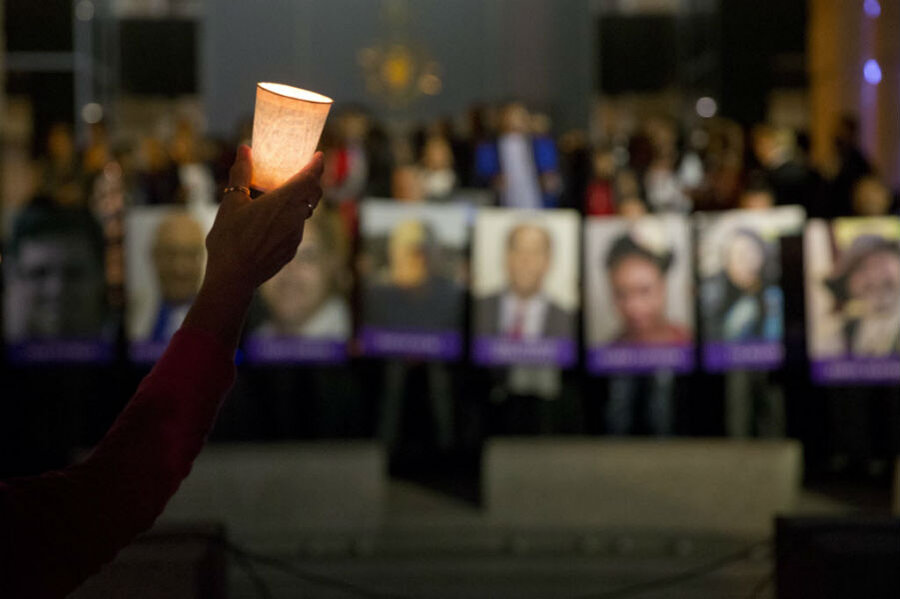Investigators scour California shooters' pasts for potential red flags
Loading...
The married couple that carried out a massacre in San Bernardino, Calif., last Wednesday had been radicalized for some time, but there is no indication they were part of a larger terrorist cell, US Attorney General Loretta Lynch told reporters in London on Wednesday.
Tashfeen Malik, and her husband, Syed Rizwan Farook, were not on authorities’ radar prior to amassing thousands of rounds of ammunition, high-powered guns and pipe bombs, then perpetrating a massacre that killed 14 and injured 20 at a holiday gathering before they were killed in a shootout with police. Now investigators are trying to identify the origin of their radicalization and what events brought them to the Dec. 2 attack.
In the past, federal law enforcement officials have been able to identify dozens of Americans who support the Islamic State militant group before they have been able to carry out attacks or travel to Syria to join the Islamist radical group largely by monitoring online chatter. However, Ms. Malik and Mr. Farook kept a low profile right up until the attack. Investigators are pouring through their pasts in hopes of identifying any red flags that should be added to those that investigators already look for.
"We are trying to learn everything we can about both of these individuals, as individuals and as a couple, to determine why they chose that location, that event, that particular place to vent their rage," Ms. Lynch said, the Associated Press reports.
"We are essentially digging into their lives as far back as we can," she added. "Our view is that the radicalization had been going on for some time, but it's really too early to tell at this point what was the genesis of it for either of them."
Investigators believe Malik was radicalized before she met Farook, FBI spokeswoman Laura Eimiller said Tuesday, though she didn't add how the FBI had come to that conclusion. Farook an American-born restaurant inspector with parents from Pakistan, reportedly radicalized before Malik emigrated to the US from Pakistan in July 2014 on a fiancée visa and married him the following month.
While counterterrorism efforts have been successful stateside in identifying individuals who attempt to travel abroad to fight with extremists, who route money for criminal activity overseas, or who use the web to communicate with terrorists, it is proving more difficult for authorities to identify individuals who are self-radicalizing through the Islamic State’s web presence.
“It’s a closed community – almost a clique,” said Seamus Hughes, co-author of a report, “ISIS in America,” released last week by George Washington University’s Program on Extremism, in a recent interview with The New York TImes. “They share memes and inside jokes, terms and phrases you’d only know if you were a follower.”
The FBI has a defined scope under Justice Department regulations in the investigative tactics it can use under the Domestic Investigations and Operations Guide, which allows agents to look into a citizen's reported suspicion even in times when there is minimal evidence for proceeding. However, for this self-radicalized pair, those suspicions didn't come to light until it was too late.
"They're not communicating with a terrorist organization, they're not doing those other things that we have typically looked for when we're looking for terrorists," said John Cohen, a former Homeland Security Department counterterrorism coordinator in an interview with Reuters.
To open an official investigation, which may include surveillance, there is a higher burden of evidence of wrongdoing for agents to move forward.
"For law enforcement to take action, their investigation has to reveal that a person has gone beyond simply having extreme thoughts, and is actually moving in the direction of carrying out an act of violence," Mr. Cohen said. "They have to be in the process of committing a crime."
This report contains material from Reuters and the Associated Press.








